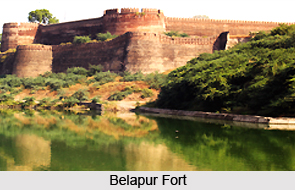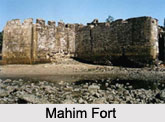 Archaeological sites in Maharashtra encompass a number of forts built in ancient times. Some of the places have also revealed artefacts associated with ancient civilizations. The sites enlighten much about the events of the past, the relics of which can still be witnessed. The architecture of the forts showcases the excellent artistry that prevailed in olden times whereas various articles discovered through excavations of other sites illuminate the lifestyle of early civilizations. They form ideal places for the study of different historical phases.
Archaeological sites in Maharashtra encompass a number of forts built in ancient times. Some of the places have also revealed artefacts associated with ancient civilizations. The sites enlighten much about the events of the past, the relics of which can still be witnessed. The architecture of the forts showcases the excellent artistry that prevailed in olden times whereas various articles discovered through excavations of other sites illuminate the lifestyle of early civilizations. They form ideal places for the study of different historical phases.
Belapur Fort
Belapur fort is located in Navi Mumbai and was constructed by Siddis of Janjira in 1560-1570. The fort was later captured by the Portuguese followed by the Marathas. In early 19th century it was conquered by the British. Presently the fort is in a dilapidated state and is underway renovation.
Daimabad
Daimabad is an important archaeological site situated on the left bank of Pravara River which is a tributary of Godavari River. It is located in Ahmadnagar district. Excavations have furnished the remains of late Harappan culture in the region. Occupational deposits in the site have revealed characteristic painted ceramics which have provided the evidences of five distinct Chalcolithic cultural phases.
Ellora Caves
Ellora caves are located in the city of Aurangabad. This world heritage site is renowned for its monumental caves exhibiting rock cut architecture. It was built by Rashtrakuta dynasty. Near the main caves are situated Jain, Hindu and Buddhist rock cut temples which were built in between 5th to 10th centuries. Several inscriptions have been found in the caves which have revealed various aspects of Indian history.
 Gawilghur
Gawilghur
Gawilghur is another significant archaeological site of Maharashtra situated in Amravati district. It is a well fortified mountain associated with the Maratha Empire. Persian inscriptions have been found in the fort which mentions the dates when each of the seven gates of the fort was built. The fort also houses the ruins of a mosque. It also hosts some unrepaired breaches formed by the British guns.
Inamgaon
Inamgaon is an agrarian village situated in Pune district. It is post Harrapan site located along the bank of the Ghod River. Excavations have recovered Chalcolithic settlement which formed a landmark in the archaeology history of India owing to its systematic arrangements. Multiple cultural phases can be studied in this site.
Mahim Fort
Mahim fort, situated in Mumbai, is an ancient fort whose origin is still shrouded in mystery. It is currently in a ruined state and is heavily encroached by slums. Due to tidal erosion, some parts of the fort have been caved. In earlier times, the fort was captured by a Portuguese commander who defeated the commander of Mahim fort. Later it was captured by the British.
Rohinkhed
Rohinkhed is a village located in Buldhana district and bears historical importance owing to two battles fought here in 1437 and 1590. The place houses a fort and a mosque. The mosque was constructed by Khudawand Khan, the Mahdavi, in 1582. Archaeological Survey of India has declared it as a cultural monument of national importance.
Sewri Fort
Sewri fort is an ancient fort located in Mumbai and established by the British in 1680. During the rule of British Empire in India, it serves as a watchtower overlooking the Mumbai harbour. Towering stone walls without any embellishment borders the fort. The most impressive structure of the fort includes a pentagonal room having linear vaulted structures and a long domed corridor. The fort is categorized as a Grade I heritage structure.
Worli Fort
Worli fort is another old fort built in 1675 by the British in Worli region of Mumbai. It was built for serving the purpose of lookout for enemy ships and pirates at the Mahim Bay. Presently it is completely in ruins and its edifice is occupied the slums.
Other Archaeological sites in Maharashtra
Other archaeological sites in Maharashtra include Bibi Ka Maqbara, Dongri fort, Jorwe, Lonar Crater Lake, Mansar, Mazagaon fort, Prakasha, Riwa fort and Sion Hillock fort.



















